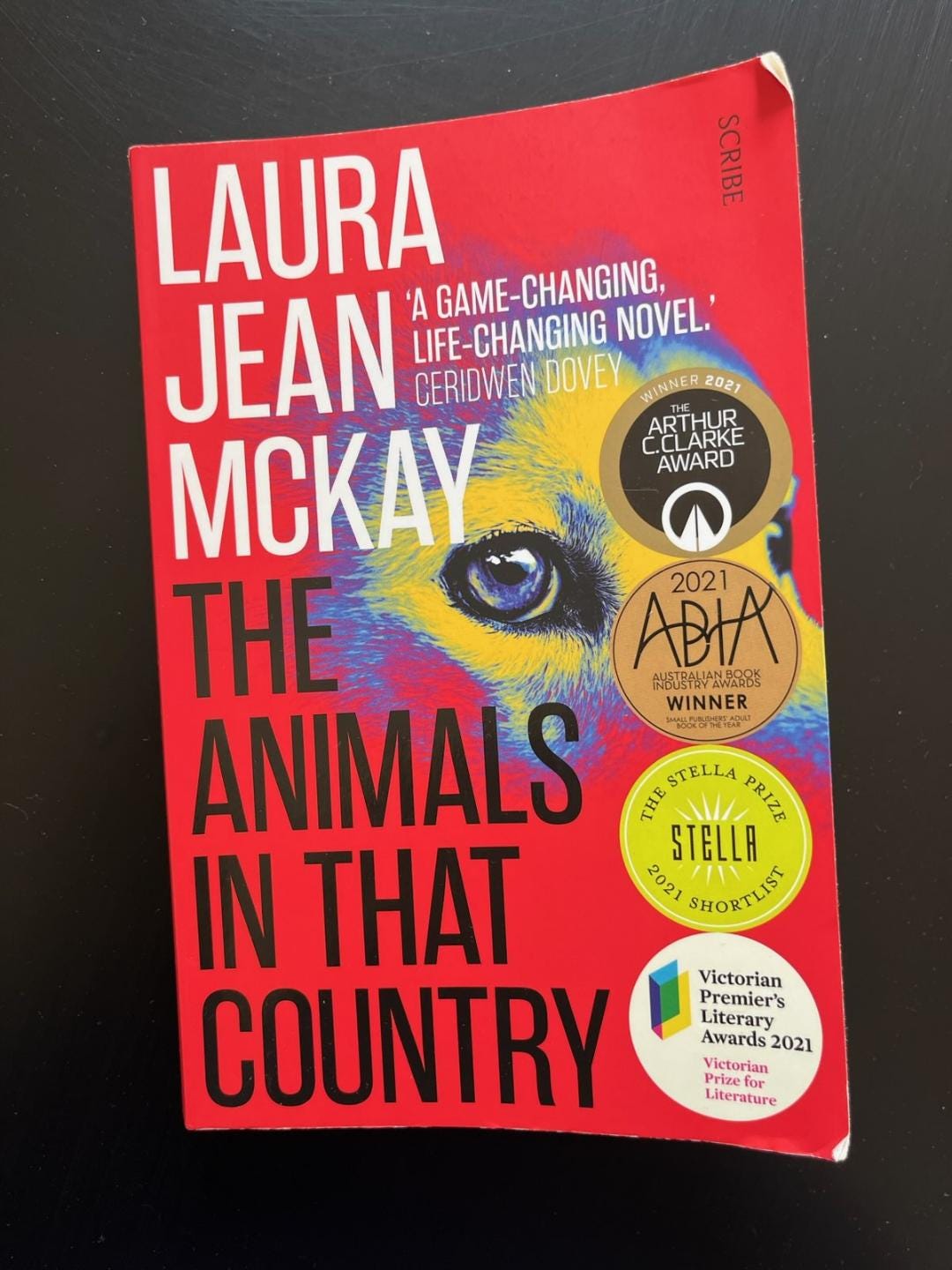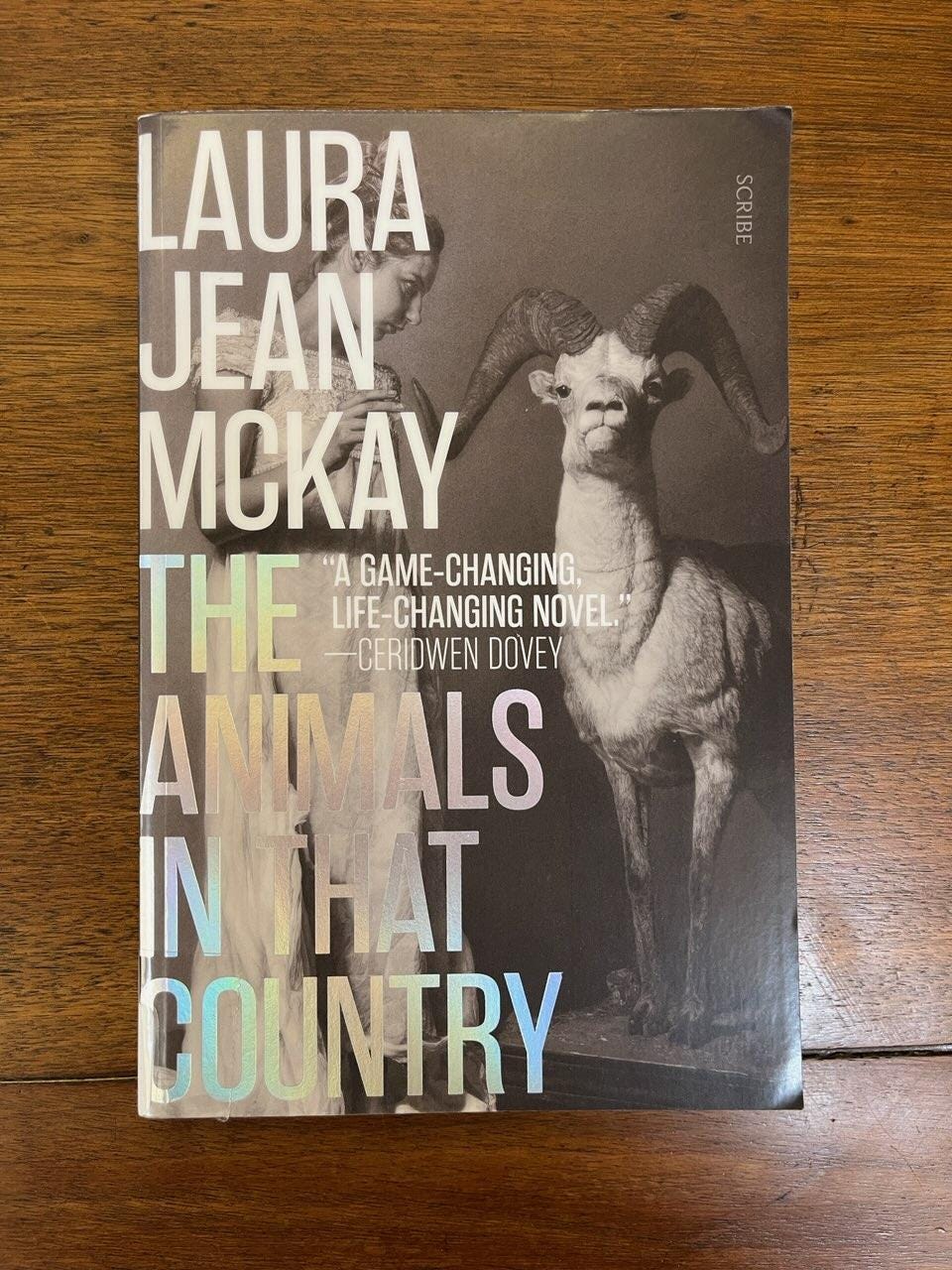This week brings our third guest post, this one from Heather Jessen, who includes below, for an interesting comparison, the book covers from both the Australia and U.S. editions of Laura Jean McKay’s The Animals in That Country. I finished David Copperfield over the weekend—more to come on that soon—but I’m about to launch into Demon Copperhead, so I’m still looking for guest writers for this column on upcoming Wednesdays. Let me know if you’d like to give it a go!
Have you ever wondered what your dog, cat, a raucous swooping blue jay, or those deer in the woods—motionless at that sight of you—would say if they could talk? If so, the premise of my current read, Laura Jean McKay’s The Animals In That Country, might also hook you: a highly contagious virus (aka “zooflu”) which causes people to understand the languages of animals sweeps through Australia toward the Park where a variety of Aussie wildlife and the main human characters live and work.
I picked up my copy this spring. Highly recommended by a bookseller in Sydney, the novel also had a catchy bright red cover featuring a dingo’s eye, a come-hither quote— “A game-changing, life-changing novel” from writer Ceridwen Dovey—and a row of stickers from just a few of the 2021 awards the novel has won.
Despite this, The Animals In That Country became my backup book—the one I threw into my bag to begin after I finished another current one. In retrospect, I think I wasn’t ready to enter another pandemic world. Ironically, I finally began reading it after succumbing to a virus that temporarily left me with no voice, unlike the main character, Jean Bennett, who is outspoken, opinionated, and veers—like the entire novel—between tragedy and comedy. A guide at the Park, she longs to be a ranger. Yet she’s barely keeping her alcoholism in check enough to keep her job and have her granddaughter, Kimberly, sleep over once a week. To complicate Jean’s situation, her former daughter-in-law, Angela, is also her boss.
I’ve read to page 68 (out of 277), where zooflu has infiltrated the Park in the form of Jean’s handsome, charming drifter—and infected—son. The tension is high, but I don’t want to spoil the story, unlike the back book cover that has more spoilers than I prefer.
McKay’s spare writing doesn’t call attention to itself, but combined with Jean’s point of view, pulls you in. For examples:
Angela comes back into the flat like she’s part of her own stampede (p. 67).
I like to put on extra makeup for the weekend shifts so we can all feel special. Today is more like grouting. There are holes in me (p. 29).
That second quote is after Jean has been on a bender. The depiction of Jean’s alcoholism is realistic and well written and I’m guessing necessary for both the plot and potential (or not) character growth, but her drunken behaviors and denial made it hard for me to like Jean. That said, I did keep reading and look forward to continuing.
I’ve attached the Australian (first) and American covers for The Animals In That Country for you to compare. Enjoy!
What are you reading this week? Let us know in the comment section below!






Hi Kathy and Heather,
Can you judge a book by its cover? I enjoyed this chance to consider the difference a cover can make.
Kathy, I’m in awe of the discipline it takes to write a new piece every week. I’m glad that you are giving yourself a break now and then, and it’s been fun to hear posts by guests. I just finished Margaret Renkl’s life-changing new book, The Comfort of Crows, and would enjoy writing about it for your readers. My email address is dianejoycharney@gmail.com.
I agree about Hamnet; I thought it was brilliant! Am reading Let Us Descend by Jesmyn Ward; so far it’s about a forced walk of male and female slaves sold from a plantation, having been separated from a mother or child. I do hope there is some light soon. BUt her writing is wonderful as I’ve read her other two book. Happy Thanksgiving Kathy!